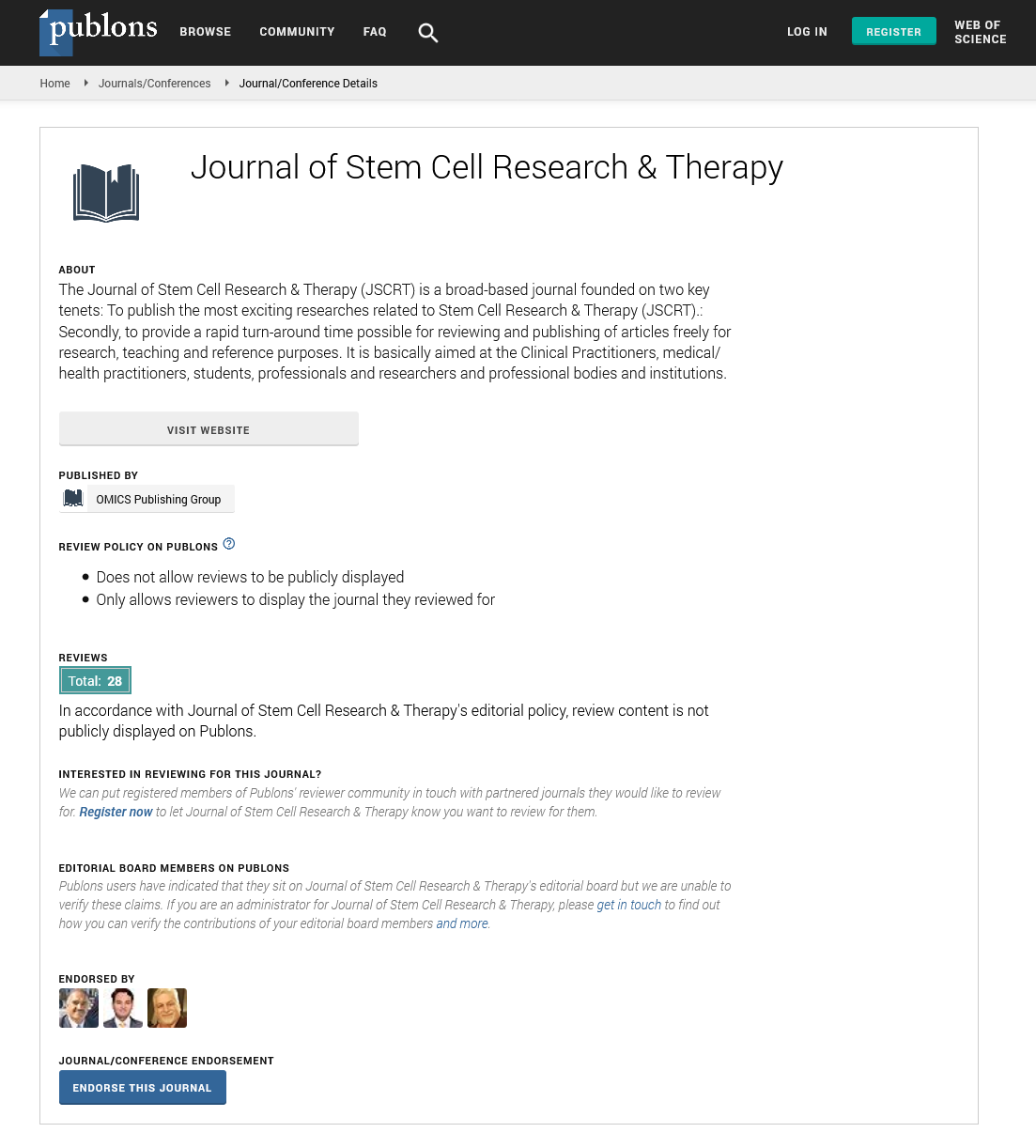Indexed In
- Open J Gate
- Genamics JournalSeek
- Academic Keys
- JournalTOCs
- China National Knowledge Infrastructure (CNKI)
- Ulrich's Periodicals Directory
- RefSeek
- Hamdard University
- EBSCO A-Z
- Directory of Abstract Indexing for Journals
- OCLC- WorldCat
- Publons
- Geneva Foundation for Medical Education and Research
- Euro Pub
- Google Scholar
Useful Links
Share This Page
Journal Flyer

Open Access Journals
- Agri and Aquaculture
- Biochemistry
- Bioinformatics & Systems Biology
- Business & Management
- Chemistry
- Clinical Sciences
- Engineering
- Food & Nutrition
- General Science
- Genetics & Molecular Biology
- Immunology & Microbiology
- Medical Sciences
- Neuroscience & Psychology
- Nursing & Health Care
- Pharmaceutical Sciences
Abstract
Graft Composition and Post-Thawing Cell Viability Influence the Hematopoietic Recovery in Autologous Hematopoietic Stem Cell Transplantation
Caterina Giovanna Valentini, Maria Bianchi, Nicoletta Orlando, Francesco Autore, Maria Grazia Iachininoto, Nicola Piccirillo, Simona Sica, Gina Zini, Valerio De Stefano and Luciana Teofili
Objective: We investigated the influence of graft composition and post-thawing cell viability on the hematopoietic recovery of patients undergoing Autologous Hematopoietic Stem Cell Transplantation (ASCT).
Methods: Data relative to 146 ASCT procedures performed in 134 patients were examined. The doses of CD34+ cells and parameters related to the grafts’ composition (white blood cell – WBC, neutrophil and platelet -PLT concentrations) were correlated to the number of days for neutrophil and platelet engraftment. Moreover, patients were grouped according to the values of post-thawing total nucleated cell (TNC) and CD34+ cell viability (as lower of higher than median values of the entire series) and hematopoietic recovery was accordingly evaluated.
Results: The CD34+ cell dose significantly predicts both neutrophil and PLT engraftment. Patients with low TNC viability had longer time to neutrophil engraftment, while patients with low CD34+ cell viability exhibited longer time to both neutrophil and PLT engraftment. High WBC or neutrophil concentrations in the graft were associated with low TNC viability. In addition, we found an inverse correlation between CD34+ cell viability and graft PLT concentration.
Conclusions: Our findings suggest that the platelet content in apheresis products is a critical issue, with an impact on CD34+ cell viability and hematopoietic recovery after ASCT. The apheresis products containing high amounts of PLT should be evaluated for PLT removal before freezing.

